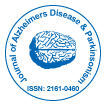Наша группа организует более 3000 глобальных конференций Ежегодные мероприятия в США, Европе и США. Азия при поддержке еще 1000 научных обществ и публикует более 700 Открытого доступа Журналы, в которых представлены более 50 000 выдающихся деятелей, авторитетных учёных, входящих в редколлегии.
Журналы открытого доступа набирают больше читателей и цитируемости
700 журналов и 15 000 000 читателей Каждый журнал получает более 25 000 читателей
Индексировано в
- Индекс Коперника
- Google Scholar
- Шерпа Ромео
- Открыть J-ворота
- Генамика ЖурналSeek
- Академические ключи
- ЖурналТОС
- Национальная инфраструктура знаний Китая (CNKI)
- Библиотека электронных журналов
- РефСик
- Университет Хамдарда
- ЭБСКО, Аризона
- OCLC- WorldCat
- Онлайн-каталог SWB
- Виртуальная биологическая библиотека (вифабио)
- Публикации
- Женевский фонд медицинского образования и исследований
- Евро Паб
- ICMJE
Полезные ссылки
Журналы открытого доступа
Поделиться этой страницей
Абстрактный
Forced Exercise for Freezing of Gait in Post STN DBS Parkinson's Disease Patients
Vanessa K Hinson, Amy Delambo, Aaron E Embry, Chris Gregory, Kathryn Gaines, Vicky Salak and Gonzalo J Revuelta
Freezing of gait (FoG) is a debilitating condition experienced by Parkinson’s disease (PD) patients whereby they are episodically unable to walk despite their intention to do so. Early, it may occur in the OFF state, and responds to dopaminergic therapy and deep brain stimulation (DBS). FoG can also occur in the ON state, termed non-levodopa responsive FoG (NLR-FoG). The objective of this study was to determine the effects of a forced exercise treadmill protocol on NLR-FoG in patients with PD that had undergone DBS. We recruited five patients to complete a progressive treadmill-training program for six weeks. The freezing of gait questionnaire (FoG-Q) was the primary outcome measure. Patients also completed diaries documenting the number of freezing episodes and falls, the gait and falls questionnaire (GFQ), as well as PD motor and balance assessments pre and post treatment. Objective assessment of spatiotemporal gait parameters were also collected pre and post treatment. We did not see a significant difference in the FoG-Q pre and post treatment. We did see improvements in the MDS-UPDRS in 4/5 patients, and improvements in falls and freezing as measured by diaries in 3/5 patients. Improvement in spatiotemporal gait parameters beyond the minimal detectible change was seen in 2/5 patients. In conclusion, we found that a progressive forced exercise protocol is feasible in patients with PD post DBS, but response to treatment was not uniform. Further larger studies to elucidate factors predictive of response in this patient population are warranted.
Журналы по темам
- Биохимия
- Ветеринары
- Генетика и молекулярная биология
- Геология и науки о Земле
- Еда и питание
- Иммунология и микробиология
- Инженерное дело
- Клинические науки
- Материаловедение
- медицинские науки
- Науки об окружающей среде
- Общая наука
- Сельское хозяйство и аквакультура
- Социальные и политические науки
- Уход и здравоохранение
- Фармацевтические науки
- Физика
- Химия

 English
English  Spanish
Spanish  Chinese
Chinese  German
German  French
French  Japanese
Japanese  Portuguese
Portuguese  Hindi
Hindi